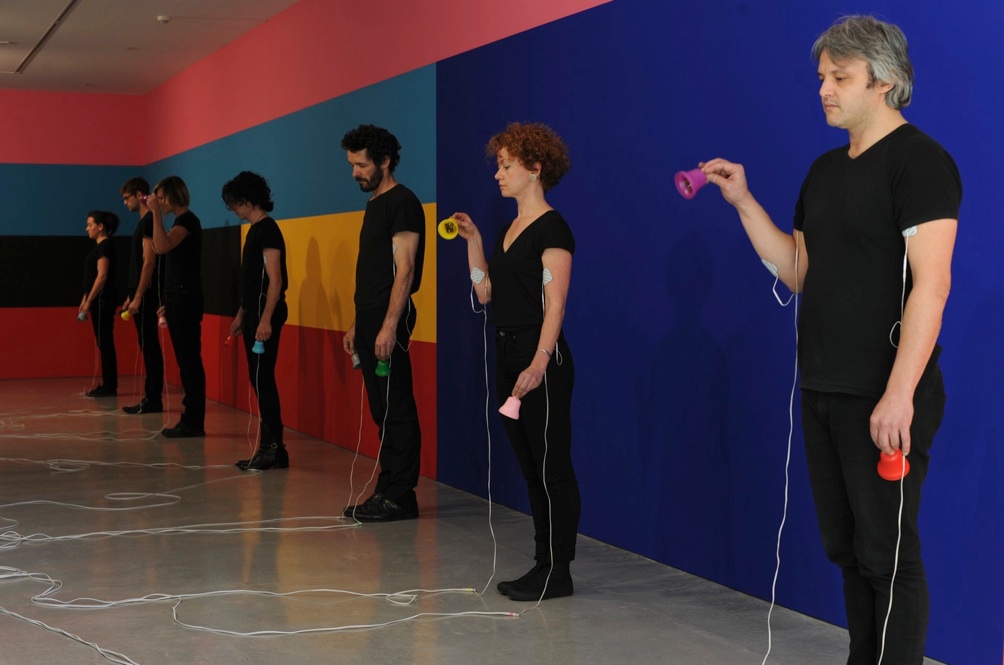DUTY
Excerpt from performance at the Museum of Contemporary Art, Australia (2014). Video: Dara Gill

A composition converted to MIDI triggers two custom-built EMS devices, which deliver electrical impulses to specific points on the performers’ arms via electrodes attached to their skin, causing their muscles to contract and generating specific involuntary movements at changing velocities.
Variations in voltage, frequency and pulse width dictate different muscular responses in the performers, ranging from unnatural jolts to unnervingly fast movements. Duty uses the induction of involuntary movement to explore the way physical (and psychological) constraint can determine both a musical outcome and extend sonic possibilities. Expanding the potential of the human body beyond conscious control the use of electric muscle stimulation in this context enables experimentation with rhythmic structures and fast movements that the performers would be unable to achieve of their own volition. The ensemble of performers create a unified somatic instrument; a conduit for complex rhythmic soundscapes and visually unnerving movements.
The application of EMS to musical performance provides a novel way to explore the interface between technology and live performance, and raises interesting questions regarding creative agency in the creation of music. The transmogrification of the performers’ body as an input/output device literalizes aspects of musical performance, where musicians frequently describe feeling like conduits or transcribers of a creation that is not their own. A perverse take on Schoenberg’s (1911) claim that “art is born not of ‘I can’ but of ‘I must’”, Duty explores the liminal space between didactic execution and free interpretation inherent in all musical performance.
In a broader sense, Duty questions assumptions about agency and free will both in musical performance and everyday contexts. An enquiry into the nature of agency within systems where cognition is distributed across people, objects and environment through technologies of connection, Duty explores what happens when embodied experience is disrupted or extended, and what kind of agency is created in these distributed systems.

DUTY by Michaela Davies tells a story about traditional musicianship, society and control. Technology is used only where absolutely necessary. The fact that it has to be performed live, that the performers have to follow the electrical impulse of a machine, the reduction to very simple instruments and reducing the musicians to extended non-artificial limbs shows the politically and socially relevant aspect of the piece... Duty shows that you can make a political statement without connections to agitprop, playing with contemporary genres and situations, crossing the border between music, performance and dramatic arts, but being grounded in a deeply musical culture. (Hybrid Art 2015-Ars Electronica Archiv)
Many thanks to performers Claire Conroy, Nick Rayment, Matte Rochford, Reuben Alexander, Jodi Clark, Louise Maloney and Mark Cauvin for participating in this project;
John Hirsch and Richard Allen for assistance with hardware development, and Sxip Shirey for creative inspiration.

Commissioned for Sonic Social, curated by Performance Space at the Museum of Contemporary Art Australia, 2014.


Michaela Davies
Photo Credit: Heidrun Löhr. Image Courtesy of Museum of Contemporary Art and Performance Space